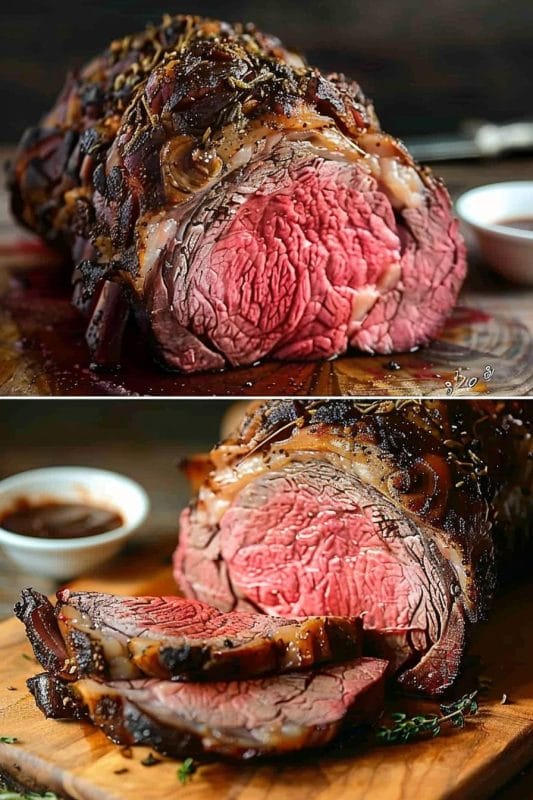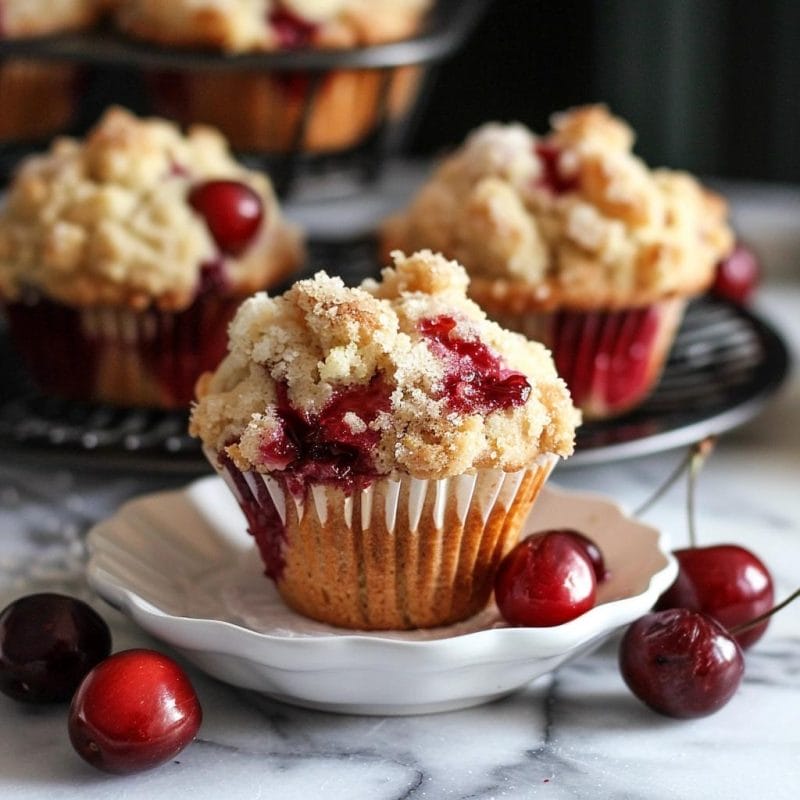Would you like to save this?
Prime rib, also known as standing rib roast, is a holiday staple that promises to elevate any dining experience with its rich flavor and tender texture. Achieving the perfect prime rib requires a careful balance of seasoning, temperature control, and timing. This recipe delivers a prime rib cooked to medium-rare perfection, boasting a beautifully browned crust and a juicy, tender interior.
The key to this method lies in a high-heat sear followed by a slow roast in a preheated, then turned-off, oven. This technique ensures the meat remains moist and evenly cooked. The seasoning blend of butter, freshly ground black pepper, herbes de Provence, and kosher salt enhances the natural flavors of the beef without overpowering them.
Recipe
Ingredients:
4 pounds prime rib roast
¼ cup unsalted butter, softened
1 tablespoon freshly ground black pepper
1 teaspoon herbes de Provence
Kosher salt
Directions:
Let the prime rib roast come to room temperature, approximately 4 hours.
Preheat the oven to 500°F (260°C).
Mix the softened butter with the ground black pepper and herbes de Provence until well combined. Spread this butter mixture evenly over the entire roast. Generously season the roast with kosher salt.
Place the roast in the preheated oven for 20 minutes to sear.
Turn the oven off and let the roast sit undisturbed in the oven for 2 hours without opening the door.
After 2 hours, remove the roast from the oven, slice, and serve.
Variations and Substitutions
Herb and Spice Variations:Rosemary and Garlic:
Replace herbes de Provence with 1 tablespoon of finely chopped fresh rosemary and 3 minced garlic cloves.
Thyme and Mustard: Use 1 tablespoon of fresh thyme leaves and 1 tablespoon of Dijon mustard mixed into the butter.
Chili and Lime: For a spicy kick, add 1 teaspoon of chili powder and the zest of one lime to the butter mixture.
Butter Alternatives:
Olive Oil: Substitute the butter with ¼ cup of high-quality olive oil for a different flavor profile.
Ghee: Use ¼ cup of ghee for a richer, slightly nutty taste.
Dietary Modifications:
Keto-Friendly: Ensure all seasonings are keto-compliant, and consider adding more high-fat seasonings like extra butter or ghee.
Low-Sodium: Reduce the amount of kosher salt or use a salt substitute.
Cooking Tips and Techniques
Choosing the Right Cut:
Prime rib roasts can be found bone-in or boneless. Bone-in cuts tend to be more flavorful and juicy due to the bone’s contribution to the cooking process. For ease of carving, a boneless roast is a good choice.
Temperature Control: Using a meat thermometer can provide additional assurance of perfect doneness. For medium-rare, the internal temperature should reach 130°F (54°C).
Resting Period: Allowing the prime rib to come to room temperature before cooking ensures more even cooking. Resting the meat after it comes out of the oven also allows the juices to redistribute, resulting in a juicier roast.
Serving Suggestions
Prime rib pairs wonderfully with classic side dishes such as:
Yorkshire Pudding: A traditional accompaniment made from a simple batter of flour, eggs, and milk, baked in the roasting pan’s drippings.
Garlic Mashed Potatoes: Creamy mashed potatoes with a hint of garlic complement the rich flavors of the prime rib.
Roasted Vegetables: A medley of carrots, parsnips, and Brussels sprouts roasted in the oven makes for a colorful and tasty side.
Creamed Spinach: The creamy texture and mild flavor of creamed spinach provide a pleasant contrast to the robust prime rib.
Storage and Reheating
Storing Leftovers:Refrigeration:
Store any leftover prime rib in an airtight container in the refrigerator for up to 3-4 days.
Freezing: For longer storage, wrap the leftovers tightly in plastic wrap and foil, then place in a freezer-safe bag. Prime rib can be frozen for up to 3 months.
Reheating:
Oven: Preheat the oven to 250°F (120°C). Place the prime rib in a baking dish, cover with foil, and heat until warmed through, approximately 20-30 minutes.
Stovetop: Thin slices can be reheated in a skillet over medium heat. Add a little beef broth to the pan to keep the meat moist.
Conclusion
Mastering the perfect prime rib is a rewarding culinary endeavor that impresses guests and elevates any special occasion. By following this recipe and incorporating variations and tips, you can tailor the dish to your preferences and dietary needs. The key lies in the balance of seasoning, temperature control, and allowing the meat to rest, resulting in a prime rib that is tender, flavorful, and visually stunning.







